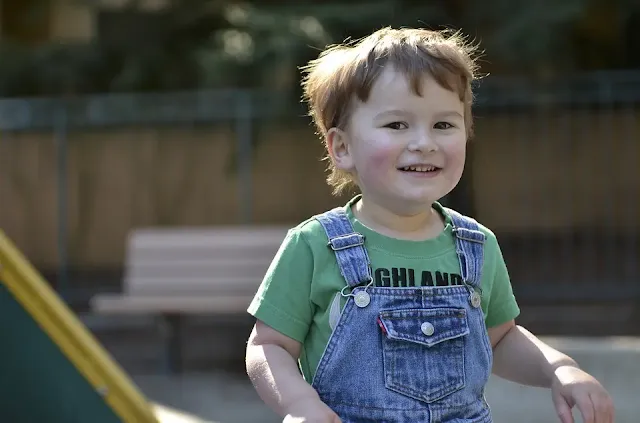Ad Code
Translate
Smart strategies for trading on crypto exchanges
October 20, 2025
Five Do’s For a Healthy Turnover That Bolsters Talent-Retention
October 20, 2025
What is Ozempic (semaglutide)? (Updated in 2025)
January 30, 2025
Discover Honeybee Pharmacy (2025 Guide Important Consumer Tips)
October 14, 2025
How To Find Suitable Properties In Cyprus?
October 20, 2025
Posture Bra: Improving Back Support and Comfort
October 20, 2025
10 Effective Strategies to Improve Domain Authority of Your Website
October 20, 2025
Atypical Autism: What is it and What are the Symptoms?
Khabza Mkhize
January 10, 2025
Among these categories, there was PDD-NOS, Asperger’s syndrome, and Autistic Disorder. PDD-NOS, or Pervasive developmental disorder not otherwise specified, is also called Atypical Autism. Per the diagnosis and statistical manual 4, PDD-NOS are the "presentations that do not meet the criteria for the Autistic Disorder because of late age of onset, atypical symptomatology, sub-threshold symptomatology, or all of these." In this, diagnostic criteria for the 2 main types exist. This includes-
Pervasive and severe impairment in an individual’s development of nonverbal or verbal communication skills or reciprocal social interaction
Other than this, the second type is when the stereotyped activities, interests, or behaviour is present in the said person. However, the criteria aren’t met for the specific PDD (pervasive developmental disorder), schizotypal personality disorder, avoidant personality disorder, or schizophrenia.
In other words, PDD-NOS consists of Atypical Autism, autistic traits, and autistic tendencies. PDD-NOS is a state wherein autism spectrum traits are present, but they still don’t meet the specs that are considered for diagnosing Aspergers movies or other Autism spectrum disorders. This may also signify that an individual has specific attributes or features of the Autism spectrum; however, the symptoms are mild.
Or another scenario can be wherein he/she exhibits high-intensity symptoms in a particular area but shows no signs in the other area. For example, a person may show no signs of repetitive behaviour, but their social skills might be severely impacted. It is important to note that the categorization of Autism, of which Atypical Autism is a part, is present in the DSM-IV-TR. However, the latest manual is the DSM-5 (published in May 2013) criteria that do not contain any different criteria for diagnosing PDD NOS. Per the latest criteria mentioned in DSM-5, separate categories are consolidated and formed as 1 umbrella diagnosis for Autism Spectrum disorder.
Symptoms of Atypical Autism
As per the established signs and symptoms, which vary from one person to another in PDD-NOS, however, research results show that persons, majorly children, fall under one of the 3 groups specified below-- 52% couldn’t get diagnosed with Autism disorder since stereotypical behaviours and traits were absent
- Of the rest, 24% showed close similarity to the classic Autism cases. However, they couldn’t meet all the diagnosis criteria.
- The remaining 24% could get placed in the specified high-functioning group with cognitive impairment and temporary language delays.
- Although there exist several significant variations in those with a PDD-NOS diagnosis, a few traits can cue people to take their loved ones for a clinical diagnosis. Some of the common characteristics of symptoms include-
Repetitive movements and behaviours
- Challenges in accommodating to new environments and routines
- Difficulty or inability to connect to others
- Delay in language usage, Communication skills, and social skills
Treatment of Autism
With the advancement of medical science, several autism treatment therapies and techniques are practised for treating those diagnosed with Autism. There exist several Autism treatment centres that provide therapies such as Speech and language therapy, Social skills therapy, Occupational Therapy, Play Therapy, Hydrotherapy, and others. Depending upon the child’s developmental, behavioural, and other needs, customized programs are made up of specific therapies and strategies that focus on decreasing the symptoms and their severity. Click here to discover if your child needs speech therapy or any other form of professional help.For autism that is associated with Fragile X Syndrome, treatment therapies to address developmental delays are currently being practised. Though Fragile X Syndrome still has no cure, experts in the field are already in the third phase of the Fragile X Syndrome clinical trial.
An Autism treatment centre generally has a team of clinicians and therapists who can suggest many important things a child may need. For instance, when you visit an autism centre to treat a loved one, you can ask them about some good special or inclusive schools near your locality or about the best diet chart that caters to your child’s nutritional needs. Together, the treatment will help encourage holistic development in the child, helping them live their lives to the fullest.
Featured Post
DL Mining Launches Ethereum Contract Participation Service, Helping Users Earn $2K Stable Daily Returns
Zizo Gala-Mkhize-
October 20, 2025
Soapie Teasers
Sister Sites
Most Popular
List of 6,000+ Dofollow Commentluv Blogs FREE (Updated 2025)
January 16, 2025
Five Do’s For a Healthy Turnover That Bolsters Talent-Retention
October 20, 2025
How To Choose The Right Place For A Winter Campsite
March 06, 2023
Popular posts
List of 6,000+ Dofollow Commentluv Blogs FREE (Updated 2025)
January 16, 2025
Five Do’s For a Healthy Turnover That Bolsters Talent-Retention
October 20, 2025
How To Choose The Right Place For A Winter Campsite
March 06, 2023
Footer Menu Widget
Created By Blogspot Theme | Distributed By Gooyaabi Templates


Social Plugin